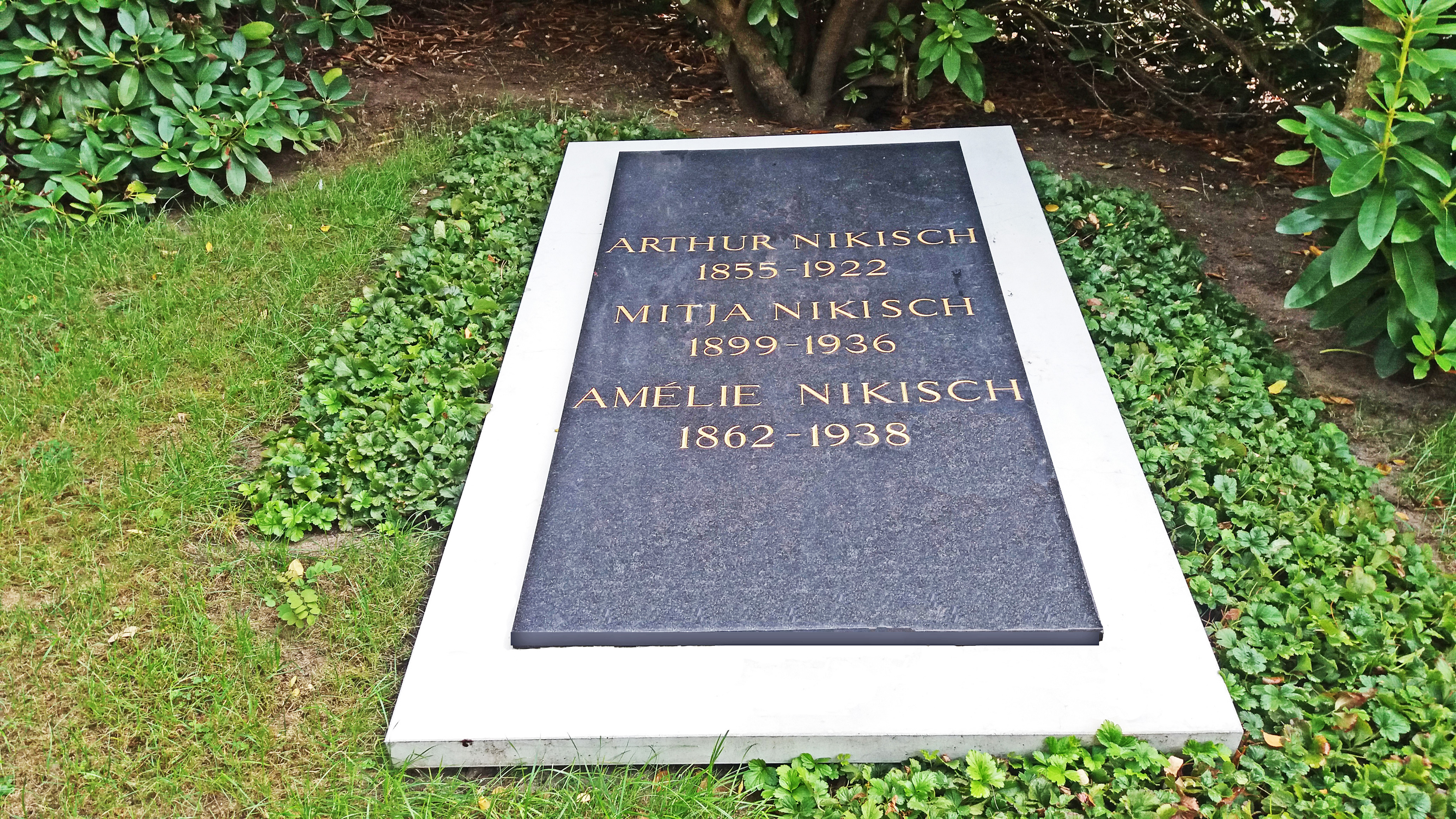1. Life
Mitja Nikisch's personal life was deeply intertwined with his musical heritage and marked by significant relationships.
1.1. Early Life and Education
Born in Leipzig, Germany, Mitja Nikisch was the son of two highly regarded musicians: Arthur Nikisch, the celebrated Hungarian orchestral conductor, and Amélie Nikisch, a Belgian singer and composer. Their influence naturally steered him towards a musical path from an early age. He received his formal musical education at the Leipzig Conservatory, where he honed his skills as a pianist under the tutelage of Robert Teichmüller and Josef Pembaur. Additionally, he studied composition under Stefan Kler, laying the groundwork for his later original works.
1.2. Private Life
Mitja Nikisch's personal relationships included his marriage to and subsequent divorce from Nora Gregor, a notable stage and film actress. Later in his life, he formed a deep connection with Alexandra Mironova, a woman twelve years his junior, originally from Moscow. Mironova was known in Berlin's Schillertheater as a prominent soubrette under the pseudonym Barbara Diu. Nikisch, who reportedly disliked her Russian name, affectionately called her Barbara. The couple had plans to marry when Nikisch received his terminal cancer diagnosis.
2. Career and Artistic Activities
Mitja Nikisch's professional career was characterized by his versatile talents, successfully bridging the worlds of classical music and popular entertainment.
2.1. Classical Music Career
Nikisch began his career as a piano soloist, making his official debut with the prestigious Berlin Philharmonic Orchestra on April 22, 1918. He quickly gained respect as a fine interpreter of classical works, performing with renowned conductors of his era, including Wilhelm Furtwängler and Sir Henry J. Wood. Although he later ventured into popular music, Nikisch maintained his classical roots and returned to concert performance in the final years of his life, hoping to resume his career as a concert pianist.
2.2. Dance Band Leadership
Despite his classical prowess, Mitja Nikisch achieved his greatest public fame as the leader of the Mitja Nikisch Dance Orchestra. He founded this popular jazz band in 1925 in Berlin, and it became a sensation during the Weimar Republic era. The orchestra was celebrated for its performances in fashionable clubs and featured some of Germany's most admired popular performers of the day. Prominent guitarist Otto Sachsenhauer lauded it as "the best dance band ever heard in Berlin," a testament to its quality and popularity. However, the rise of the Nazi regime brought an end to his successful venture, forcing him to dissolve the band in the 1930s as the political climate became increasingly restrictive for certain forms of art and expression.
2.3. Compositional Work
Beyond his performance career, Mitja Nikisch also engaged in compositional work. His most significant contribution as a composer was his Piano Concerto. This work became his magnum opus, composed feverishly in the final days of his life after his diagnosis of lymphatic cancer. Despite his deteriorating health, his illness seemed to release an enormous surge of energy, allowing him to dedicate several hours a day to its creation. The concerto was dedicated to his fiancée, Barbara, reflecting his profound personal connection to the piece and his life's culmination.
3. Death
Mitja Nikisch's life was tragically cut short at the age of 37. While on summer holiday in northern Italy, specifically in Venice, he was diagnosed with lymphatic cancer. Knowing his time was limited, he channeled his remaining energy into completing his Piano Concerto. He died in Venice on August 5, 1936, immediately after finishing the composition. At the time of his passing, his fiancée, Barbara, was in London on business. Upon her return to Venice, she discovered the handwritten score, a poignant memento of Nikisch's brief but impactful life and final artistic endeavor.

4. Recordings and Works
Mitja Nikisch left behind a valuable musical legacy through his recordings, encompassing both his classical performances and his contributions to popular music.
4.1. Classical Recordings
As a classical performer, Mitja Nikisch made several reproducing piano rolls. His sole commercial recording in the classical realm was a 1934 rendition of Mozart's Piano Concerto No. 20 in D Minor, K. 466. For this recording, he performed with the Berlin Philharmonic Orchestra under the direction of Rudolf Schulz-Dornburg.
4.2. Dance Band Recordings
The Mitja Nikisch Tanz Orchester produced numerous popular music recordings. Notable tracks include a 1931 recording of "Should I (Reveal Exactly How I Feel)" (in German, "Ich kann, ich will"), a tune originally composed by Nacio Herb Brown and Arthur Freed for the MGM film Lord Byron of Broadway. This recording featured vocalist Paul Dorn. Other recordings by the orchestra included "Madelon dream waltz" and "I can't do without you = Ich kann nichts ohne dich" (originally by Irving Berlin).
4.3. Major Compositions and Their Recordings
Mitja Nikisch's most significant compositional work, his Piano Concerto, has been recorded by other acclaimed artists. A notable recording features Howard Shelley on piano, accompanied by the Graunke Symphony Orchestra, conducted by Kurt Graunke. This performance was released on Edition Sedina E.S. 107 CD.